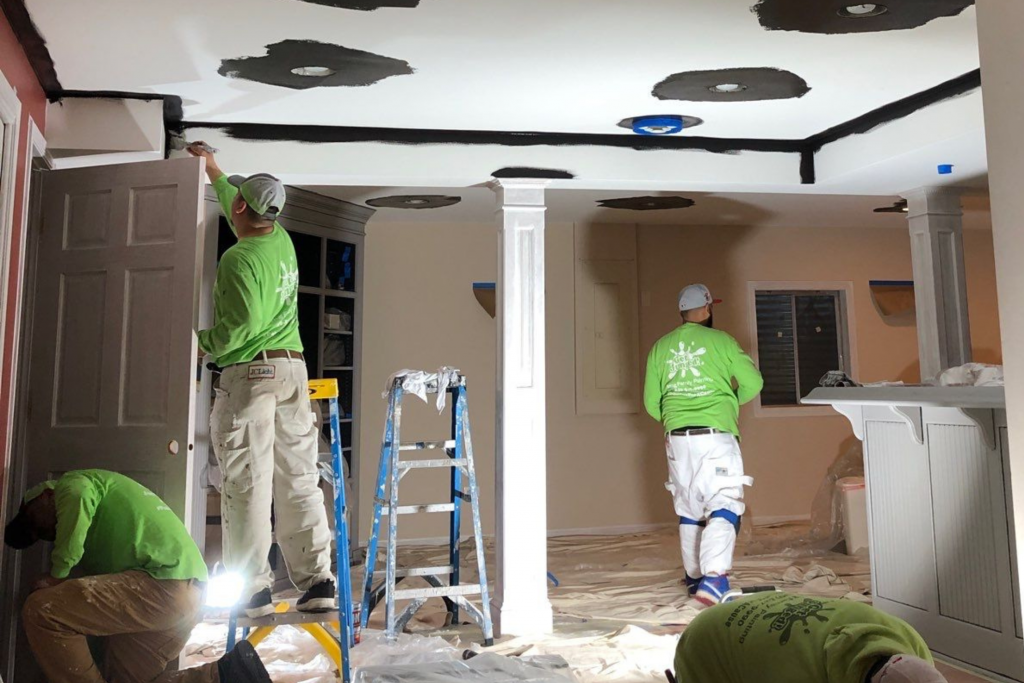
Common Painting Mistakes to Avoid (and How to Fix Them)
A fresh paint job can completely transform a room or give your home’s exterior new life. But a single mistake—whether during prep, painting, or finishing—can leave you with uneven color, peeling paint, or rough edges.
The good news? Most painting mistakes are preventable, and many can be fixed if you know what to look for. In this guide, we’ll walk you through the most common painting pitfalls, how to avoid them, and what to do if you spot these problems in your home.
For a detailed guide on evaluating your finished project, check out How to Check the Quality of Painting Work.
What is the going rate for painters in Illinois?
One of the biggest mistakes homeowners make is diving straight into painting without proper prep.
Why it’s a problem:
Paint needs a clean, smooth surface to adhere properly. Dust, grease, or peeling old paint can prevent proper bonding, leading to chipping and peeling within months.
How to avoid it:
- Wash walls with a mild detergent to remove dirt and oils.
- Scrape away any loose paint.
- Sand surfaces to smooth imperfections.
- Apply primer where needed, especially over bare drywall, wood, or patched areas.
How to fix it after the fact:
If peeling has already started, you’ll need to remove the loose paint, sand, prime, and repaint the affected areas.
Using the wrong type of paint
Not all paints are created equal—and not every type is right for every space.
Why it’s a problem:
- Using flat paint in high-moisture rooms like bathrooms can lead to mold and mildew.
- Applying interior paint to exterior surfaces leaves it vulnerable to weather damage.
How to avoid it: - For high-traffic areas, choose a durable satin or semi-gloss finish.
- For bathrooms and kitchens, look for moisture-resistant formulations.
- For exteriors, use high-quality outdoor paint designed for your climate.
How to fix it after the fact:
If the wrong paint type was used, the only reliable fix is to repaint with the correct product after proper prep.
For a full list of recommended material contact Jung Family Painting.
Poor cutting technique
Even if your walls are perfectly painted, sloppy edges can ruin the overall look.
Why it’s a problem:
Jagged lines where walls meet ceilings, trim, or other walls can make the job look rushed and unprofessional.
How to avoid it:
- Use high-quality painter’s tape or a steady hand with an angled brush.
- Work slowly along edges before rolling the main wall areas.
How to fix it after the fact:
You can carefully repaint the edges, using painter’s tape to protect the adjacent surface.
For a complete guide on what crisp, clean lines should look like, read our How to Check the Quality of Painting Work article.
Uneven Coats And Streaks
Few things are more frustrating than stepping back and seeing roller marks or streaks.
Why it’s a problem:
Uneven application can make the color look patchy and affect how light reflects in the room.
How to avoid it:
- Load your roller or brush properly—don’t skimp on paint.
- Maintain a wet edge as you work to prevent lap marks.
- Use consistent pressure and smooth, even strokes.
How to fix it after the fact:
Lightly sand uneven areas, wipe clean, and apply an additional coat with better technique.
Painting In The Wrong Weather Conditions
Weather plays a big role in exterior painting success—and can even impact interior projects in unconditioned spaces.
Why it’s a problem:
High humidity, extreme heat, or freezing temperatures can affect drying times and adhesion.
How to avoid it:
- For exterior jobs, aim for mild, dry days between 50°F and 85°F.
- Avoid painting right before rain is forecasted.
- Follow the paint manufacturer’s temperature and humidity guidelines.
How to fix it after the fact:
If weather damage is visible—such as blistering, peeling, or cracking—you’ll need to remove the affected paint, allow the surface to fully dry, and repaint under proper conditions.
For a breakdown of the cost to redo weather-damaged work, see our post on how much it costs to paint a 2-story house exterior.
How To Fix Common Painting Problems
While prevention is best, here’s how to handle issues you’ve already spotted:
-
- Peeling paint: Scrape, sand, prime, and repaint.
- Uneven coverage: Apply another coat, ensuring full drying time between layers.
- Paint bleed under tape: Wait until fully dry, then touch up with a steady hand.
- Bubbling paint: Remove bubbles, sand, and repaint once the area is dry.
If problems are widespread or the fix feels overwhelming, calling a professional can save you time and ensure lasting results. That’s where our Residential Painting Services come in.
The Bottom Line
A great paint job is equal parts preparation, technique, and the right materials. By avoiding these common mistakes—or spotting them early—you can save yourself a lot of time, money, and frustration.
If you’ve already made one of these errors, don’t panic. Many can be fixed with a little extra work, and Jung Family Painting is always here to help when you’d rather hand it over to the pros.
Want a flawless finish without trial and error? Contact Jung Family Painting today for a free, no-obligation estimate and let our expert team get your home looking its best.
